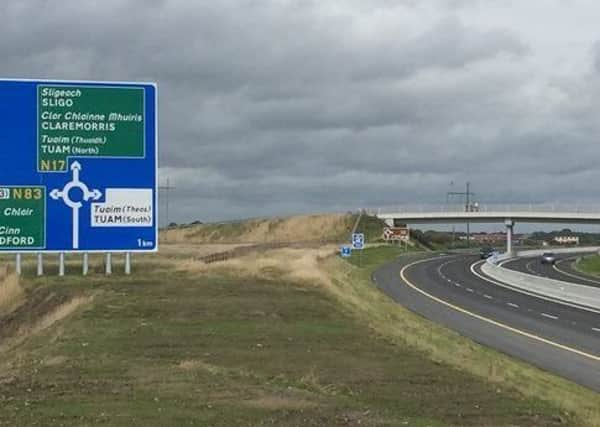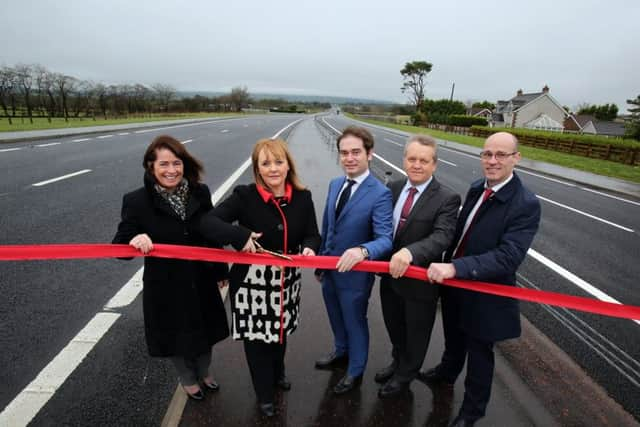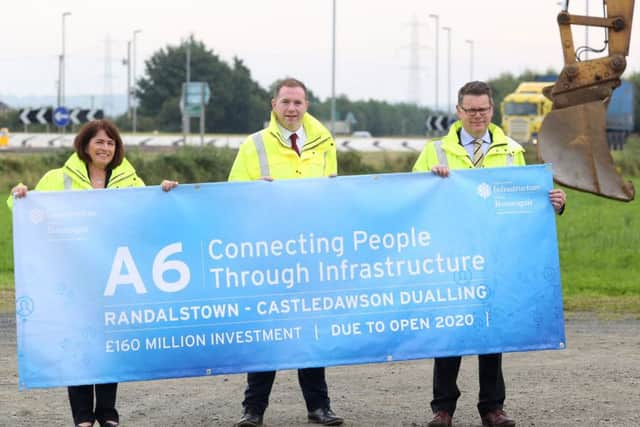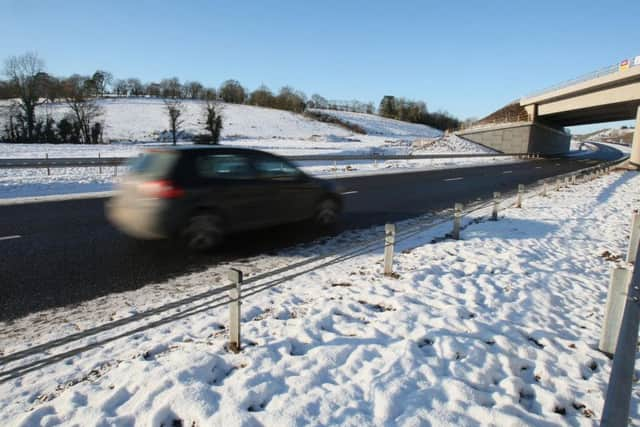Ben Lowry: Another link in the chain of a possible orbital motorway round Ireland


The 35-mile Gort to Tuam stretch of the M17, in the southwest, received barely any publicity in Northern Ireland, for understandable reasons: few people in the Province will use it much, if at all.
Even so, the road tells us about future infrastructure on the island. One day it might be part of an orbital motorway/dual carriageway round the entirety of Ireland.
Advertisement
Hide AdAdvertisement
Hide AdAlready there is a route down the eastern seaboard, from Larne (which has a gleaming new dual carriageway) almost to Rosslare (a final southerly stretch of motorway is being built past Enniscorthy, near to Co Wexford’s south coast).


Twenty five years ago traffic on the Larne-Rosslare corridor (designated Euro Eo1) crawled through Newry, Dundalk, Drogheda and Dublin. Now it bypasses them all.
Heading northwest from Larne there is unlikely to be a fast road from the port town to Londonderry that might be part of a future all-Ireland orbital.
There might, however, ultimately be one from Ballymoney to the Maiden City, past Coleraine and Limavady (the newly dualled part of the A26 north of Glarryford means Belfast-Ballymoney is mostly a four-lane road now).
Advertisement
Hide AdAdvertisement
Hide AdA Ballymoney-Londonderry route is decades in the future. But if an all-island orbital road goes inland a bit, it could form part of the Belfast to Londonderry expressway road, which is emerging gradually.


The Randalstown to Castledawson stretch is part under way and part ready to go (if the environmental legal case exhausts all appeals).
Another stretch of Belfast-Londonderry (Dungiven to Drumahoe) is also edging closer, with the necessary land for it being vested.
The next stage in an all-island orbital would be Londonderry to Letterkenny. Among other advantages, it would help tourists move easily between Donegal and NI.
Advertisement
Hide AdAdvertisement
Hide AdThere is an interesting plan to extend the A6 past Drumahoe to a point near both City of Derry airport and the Foyle Bridge, bypassing a cluttered A6 section near Altnagelvin. But I see no easy way to connect to a future dual carriageway to Letterkenny, although there is now a link road from the bridge.


A letter to these pages outlined environmental concerns about that mooted A6 extension through the Faughan Valley.
Is there instead a westerly route from Drumahoe to Letterkenny, with a junction at the upgraded A5?
A Londonderry-Letterkenny dual is a distant prospect. As is the next stage in my hoped-for orbital, Letterkenny to Sligo. Parts of the route, such as the Bundoran-Ballyshannon bypasses, are new wide roads. There is also now a road through Sligo. Plans for other new sections on this part of the road were shelved by the financial crisis.
Advertisement
Hide AdAdvertisement
Hide AdThere were also plans for a route south of Sligo, which ultimately would be part of a motorway/dual all the way to Cork. But upgrades south of Sligo were also shelved.


This week’s new stretch of motorway begins at Tuam, a former bottleneck 65 miles south of Sligo.
It completes an 80-mile motorway to Limerick, including a tunnel under the Shannon and a few miles of M20 at the start of a planned motorway to Cork. The Taoiseach Leo Varadkar this week hinted that finishing the M20 is the next scheme.
Eastwards from Cork along the south coast, the route is steadily improving to the aforementioned coastal highway back up to Larne.
Why is all of this relevant to Northern Ireland?
Advertisement
Hide AdAdvertisement
Hide AdIt means key roads are no longer just spokes out of Belfast and Dublin. For example, in the future if you are travelling from Moira to Shannon Airport you might find that the best way to go is via Enniskillen and Sligo and then south on a motorway, rather than due south to Dublin and southwest to Limerick.
Other countries also took a long time to build such roads. I have often driven from London to southwest France but only in 2006 did it become possible to do so on motorways that steered well clear of Paris.


For decades Northern Ireland had better roads than the Republic, but the latter finally got its network together, and we have things to learn from the way they did so.
It is easy to sneer that they had EU assistance. But they used money well, and thought long term.
Advertisement
Hide AdAdvertisement
Hide AdThey also used tolls to help fund motorways, something we did not have political courage to embrace.
I think NI could have had three tolling points to fund motorways:
• On A6 west of M22 Randalstown
• On A4 west of M1 at Dungannon
• On A1 south of Sprucefield
Those sections are now upgraded (or being upgraded) but to a lesser standard than motorway (the A1 dual is still riddled with deadly gap junctions).
The Republic proved motorists will pay modest tolls for a first rate road. Few people bother to take the old road just to avoid the €2 toll at Drogheda.
Advertisement
Hide AdAdvertisement
Hide AdIf in NI we had charged, say, £1.50 at the locations suggested above to fund motorway stretches, and if the stretches had attracted 14,000 vehicles of 20,000 a day that used the replaced road, it would have generated £7+ million a year income at each point.
It is too late for that now.
But completing an orbital is still feasible, and would take the island’s infrastructure to a new level, particularly if a seamless Brexit border can eventually be agreed.
• Ben Lowry (@BenLowry2) is News Letter deputy editor